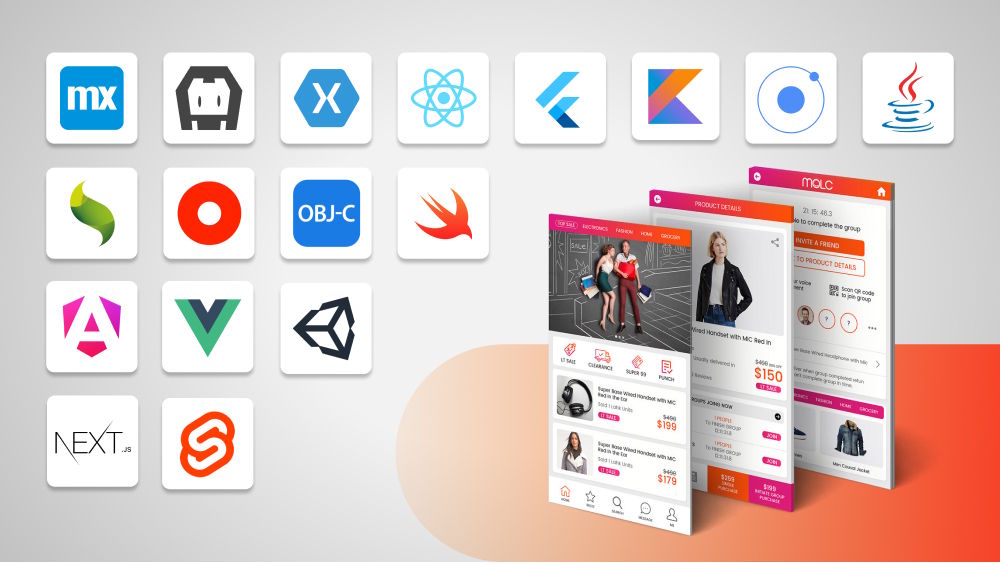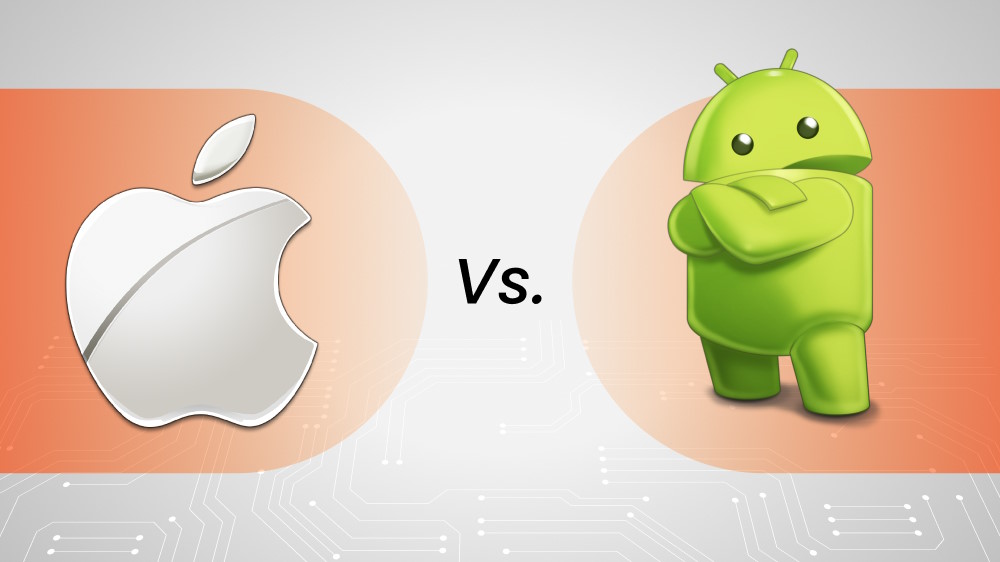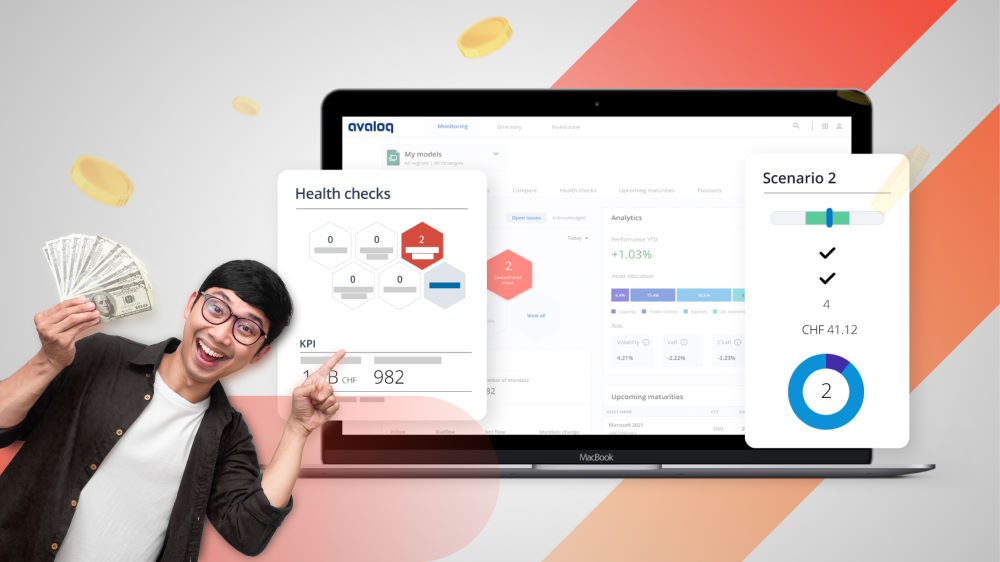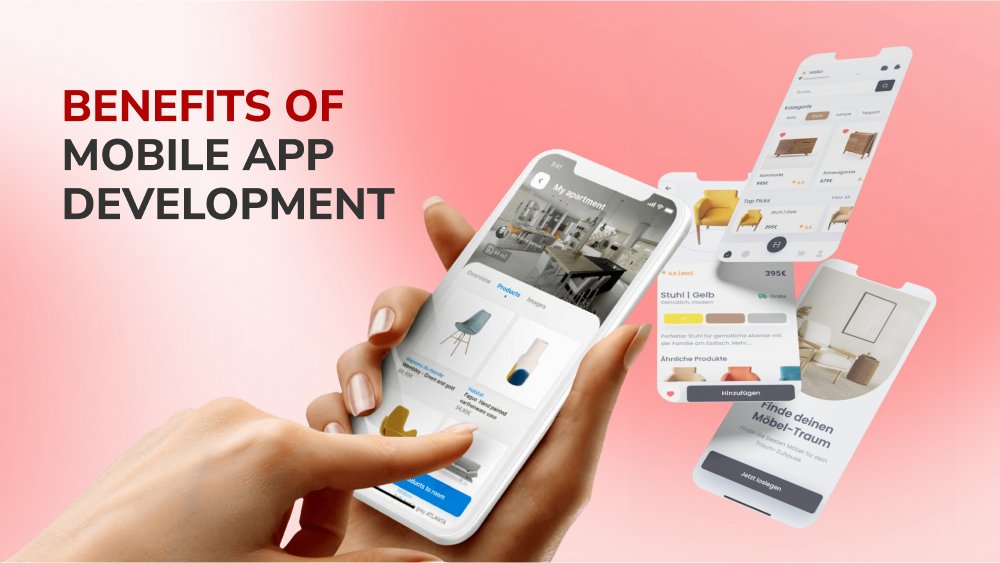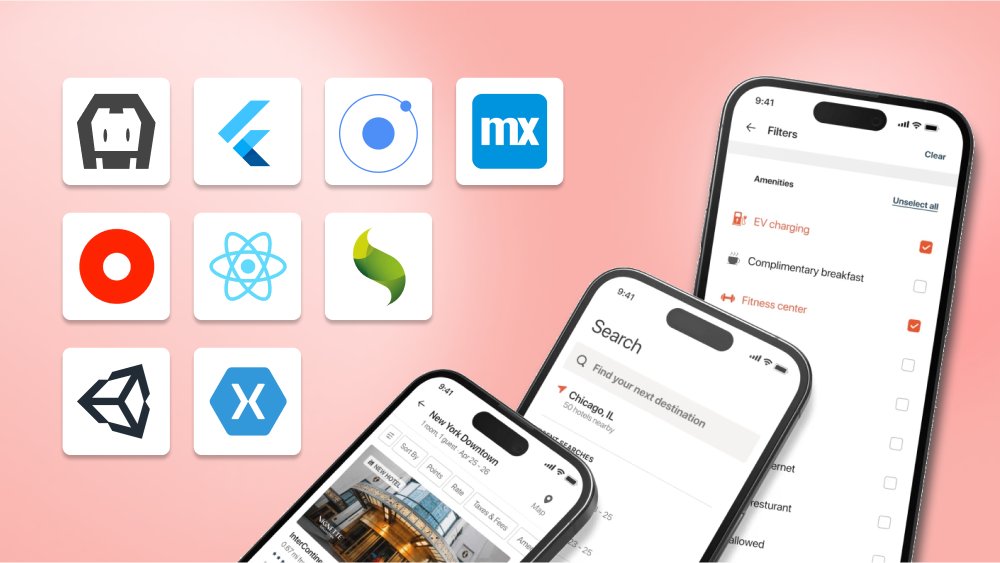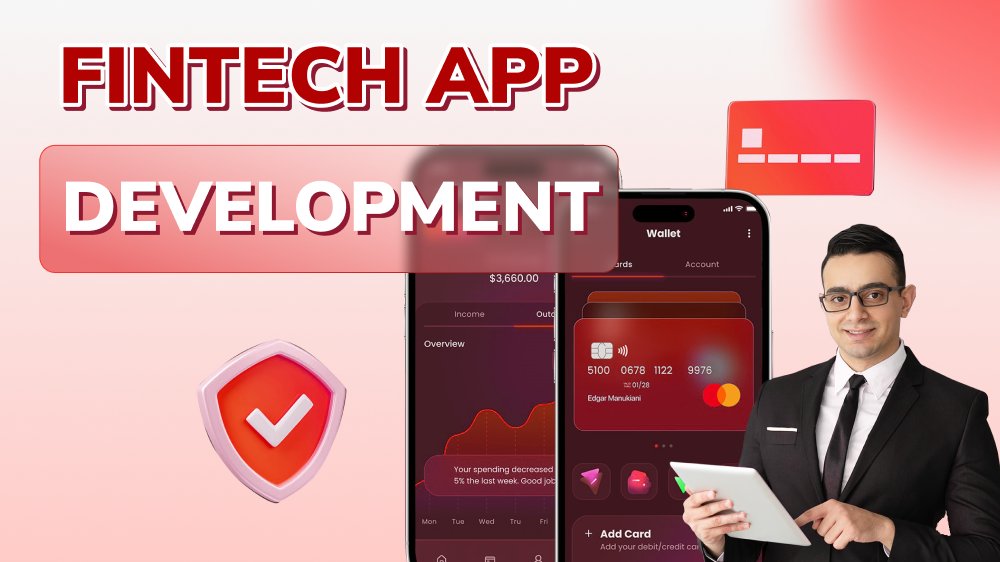Everything You Need to Know to Build an eCommerce App
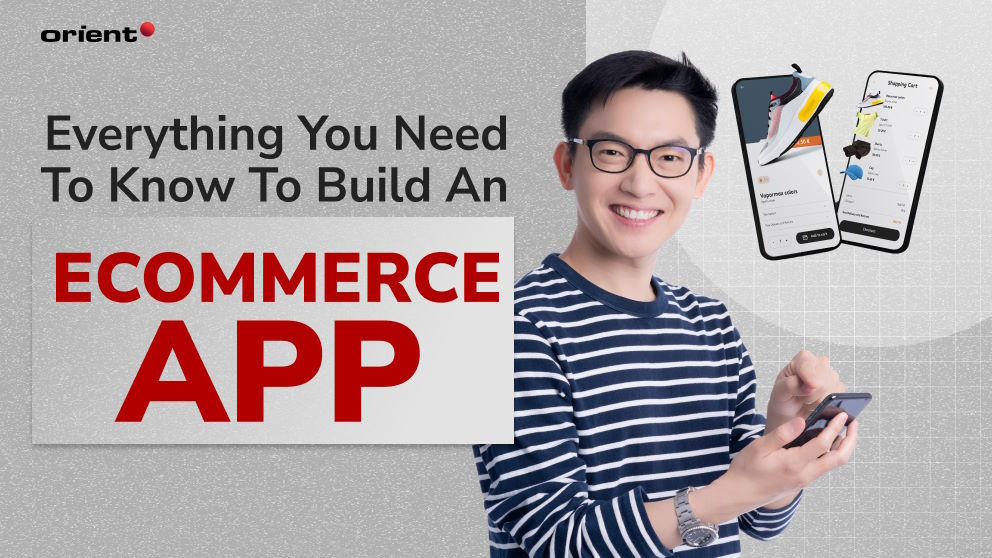
Content Map
More chaptersLet’s say you want to buy a fan. What’s the first thing that comes to your mind when you think about buying a new one? Is it going around the store, looking at different kinds of fans, and then deciding that you want to buy the orange-black one from the first store you see? Or do you prefer to take out your phone or laptop, log into your favorite e-commerce platform, look at the range of products available, compare the prices, and read the reviews?
eCommerce apps have become the go-to shopping experience. For users, online stores are convenient and reduce any possible friction while shopping. For businesses and developers, they are a must-have to increase their online presence while boosting revenue.
If you are a developer looking to build a side hustle, or a new business only dabbling in the world of eCommerce apps, or even just simply interested in how to build an eCommerce app, this article is for you. But first, we need to get through the basics.
What Is an eCommerce App?
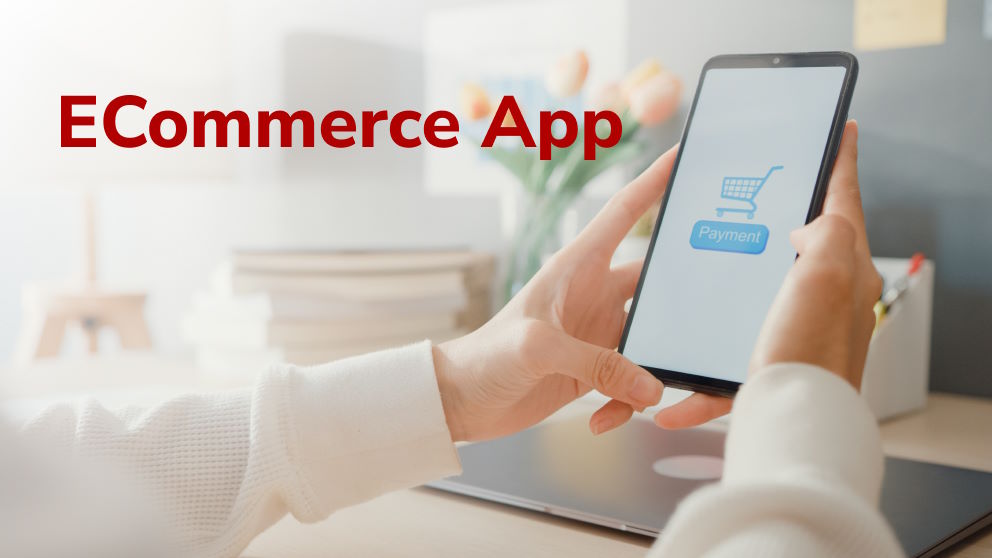
Google Cloud defines an eCommerce app (sometimes referred to as a mobile eCommerce app) as a software program that allows users to purchase and sell goods or services online. Different types of features are required for eCommerce apps depending on the type of consumer. Some features of an eCommerce app include browsing product catalogs, adding items to a cart, creating a wish list, payment processing, tracking shipment, and other order management functions.
There are three primary types of eCommerce apps:
- Business-to-consumer (B2C): The most common mobile eCommerce app today, where you can find businesses selling customers services or products. Examples of B2C apps are Amazon, Taobao, or Lazada.
- Business-to-business (B2B): B2B mobile apps are an online market for businesses selling products or services to other businesses. These products or services may be software subscriptions and office electronics. Examples of B2B brands are Adobe, HubSpot, and Slack.
- Consumer-to-consumer (C2C): Customer-to-customer (C2C) eCommerce applications facilitate the exchange of goods or services between two or more customers. Facebook market, Etsy, and eBay are instances of C2C e-commerce apps.
Market for eCommerce Apps Overview
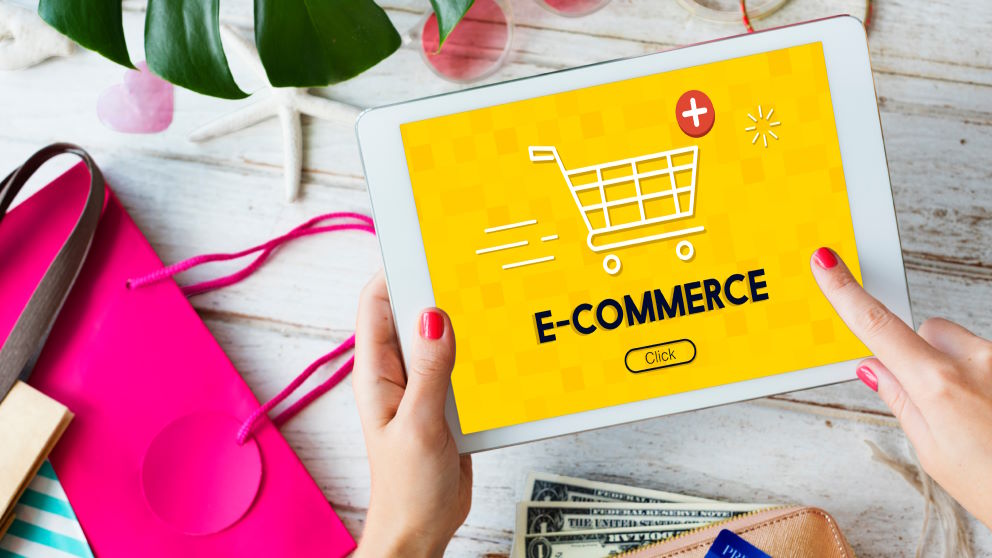
The e Commerce app market seems narrow - but is it entirely true? Will there be any space left for further growth in this market? We need to take a close look at the statistics before jumping to any sort of conclusion.
- Statista reports that worldwide retail e-commerce sales reached over 5.2 trillion dollars in 2021. Over the ensuing years, this amount is expected to increase by 56%, reaching over 8.1 trillion dollars by 2026.
- Amazon leads the list of the largest e-commerce corporations by market capitalization with 1.47 trillion USD, followed by Alibaba, Pinduoduo, Meituan, and Shopify.
- 91% of Americans aged 18 to 49 report that they have made an online purchase using an eCommerce mobile app at least once.
- By 2025, it is anticipated that $710 billion in sales will come from mobile commerce.
- Black Friday was the most popular shopping day of the year, with online shoppers paying a total of 9.12 billion dollars. Cyber Monday was the second most popular shopping day, with shoppers spending a whopping 11.3 billion dollars.
- China - which accounts for nearly half of the transactions globally - is the largest eCommerce market in the world.
It is clear that eCommerce platforms have the potential to be a profitable businesses. If implemented correctly, it is possible to make a name for oneself in this rapidly expanding sector.
Why Build an eCommerce App?

Other than financial reasons, there are a number of facts worth considering, whether you are new to the eCommerce industry or if you already are an established commerce business.
Enhance Customer Experience
Developing an eCommerce app from scratch ensures that customers receive a consistent and distinctive shopping experience, allowing your business to differentiate itself and maintain customer loyalty.
Customization and Integration
Building an eCommerce app from the very beginning instead of depending on one that’s already available on the market gives you the power to customize the app as needed. In addition to the app’s key features, you can scale and add unique features that align with your business goal and vision.
In addition, you can build an app from the ground up and integrate it with your existing business system. This means you can centralize all your important data and information related to revenue, stock, delivery, etc., and reduce the risk of costly mistakes from switching between different applications.
Online Presence and Branding
Setting up an online store gives your customers easy access. We live in a world where almost everything is done on a smartphone - be it entertainment, work, or shopping. There are, after all, more mobile phones than people in the world - 8.58 billion cellular subscriptions were in use in 2022 globally. This number alone should be a solid reason for you to kickstart your eCommerce mobile app development journey and even start putting your product in app stores.
Revenue Growth & Competitive Advantage
Developing an eCommerce application has been demonstrated to increase revenue for major players in the industry, such as Walmart or Amazon. Suppose your customers wish to purchase a product from your company online, but you do not have an online store; it is highly probable that they will choose your competitor’s service. In summary, the purpose of an eCommerce application is to offer your customers a consistent, one-of-a-kind experience while also competing with your competitors.
Features of an MVP eCommerce App
No matter what eCommerce app idea you have in mind, there are nine must-have features you must consider during the development process.
- Easy Sign-up and Login: Long registration forms may discourage potential new users. Make the process simple and user-friendly, e.g., log in with external accounts like Apple or Google.
- Push Notifications: It’s important to include push notifications for mobile devices and update users with sales, reminders, delivery status, or discounts on the customer’s wish list products.
- Shopping Cart: A functional shopping cart, where customers may place items they would want to buy or compare prices with pictures and brief descriptions, is essential for a flawless online shopping experience.
- Easy Browsing: Browsing product pages should be easy without constant reloading errors while users are also adding to the cart or using the search bar to find specific products.
- Filtering and Sorting Options: Customers should be able to filter and sort options easily and quickly to find their desired products or services.
- Payment Options: Provide your users with multiple payment options. These could include credit card payments, digital wallets, or standard bank transfers. Make sure your payment gateway is set up securely.
- Review: Most users tend to go through the ratings and reviews before they decide to buy something. Include this function during the eCommerce application development process so your customers can leave feedback.
- Delivery Status Tracking: Allow your users to see where their products currently are and the estimated date of arrival.
- Other Features: There are, of course, multiple other features to include in your app, like Livestream, live chat, augmented reality (e.g., virtual try-ons), product comparison, loyalty programs - the list can go on forever. However, make sure you have the basic functions down first.
Steps to Building an eCommerce App
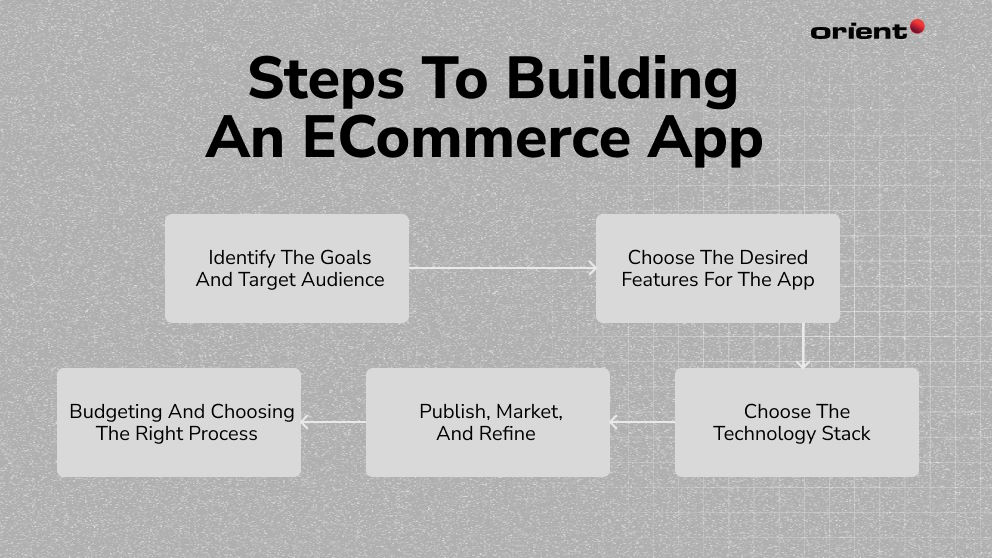
Whether you are looking to build an Android app or an app for Apple’s app store, there are basic steps to go through in the development process.
Identify the Goals and Target Audience
What is your vision for this eCommerce application? What do you have to offer that your opponents don’t? After answering these questions, define your target audience. What are their preferences and behaviors? Conduct your surveys as needed, then draw up a detailed plan for your app.
Choose the Desired Features for the App
Once a goal and vision have been established, it is important to select the features and functions for your applications. These should be in line with your objectives and target audience. While it is important to include the essential features outlined above, it is also important to consider the features that will differentiate your app from other similar applications. Additionally, the number of features chosen should be taken into consideration, as the more complex and numerous they are, the longer it will take to launch the app.
Choose the Technology Stack
Depending on your goals, budget, and expertise, there are numerous tech stacks to choose from. The right tech stack makes all the difference. Having a professional team like the Orient Software Team on board creates a solid foundation for the coming steps.
Budgeting and Choosing the Right Process
How much is your business willing to invest in the project? How long is the project estimated to be? How much flexibility do you want when it comes to changing the designs or adding new features?
Depending on what you want, you can choose a SaaS Solution or build a bespoke app. SAAS-based eCommerce apps are simple to set up and only take a few weeks to launch. That’s because a clever plugin can make your webstore a PWA or a native app. But with SAAS solutions, you only get to choose from the available features.
As for bespoke apps, you are building brand-new apps from the ground up. With custom software development services, you get to be very specific about what you want in your own app and add complex integrations.
Publish, Market, and Refine
After launching the app, marketing the product is just as important as developing it. A great eCommerce app is one that continuously gathers feedback and improves itself. Your users will keep asking for updates and enhancements, and your developers should be able to keep rolling out updates that meet their needs, giving them more reasons to keep using your app.
Things to Keep in Mind When Building an eCommerce App
Product Catalog Management
Product catalog management is the process of adding, editing, and removing products from a catalog over a period of time. It also involves managing product information, such as pricing and availability, as well as product descriptions.
Strong Performance
Customers have high expectations in their online shopping experience. This is especially pronounced during large sales in the year, like Cyber Monday sales or Single’s Day sales. eCommerce apps should be able to handle large traffic or volumes without lagging. Make sure this box is checked during the eCommerce app development process.
Security
Your eCommerce app will store sensitive information from your users, including their personal information and payment details. Make sure security is one of the top priorities when you are working on building the app. Shield the user’s data with secure payment gateways, two-factor authentication, and encryption.
Proper UX/ UI Design
User interface/user experience (UI/UX) design is one of the crucial factors in providing your users with an enhanced customer experience. The experience should be seamless and even go beyond the in-person shopping experience. The UX/ UI design, color scheme, and imagery are all part of your business’ identity and voice.
Kickstart Your eCommerce App Project
It is clear that a lot goes into developing a successful eCommerce app. You need to conduct thorough market research and understand the type of app you would like to build, figure out the key features, choose the right tech stack and processes, and keep working on the project even after launching.
If you need any help on your eCommerce app project, contact us, and we are more than happy to help!

